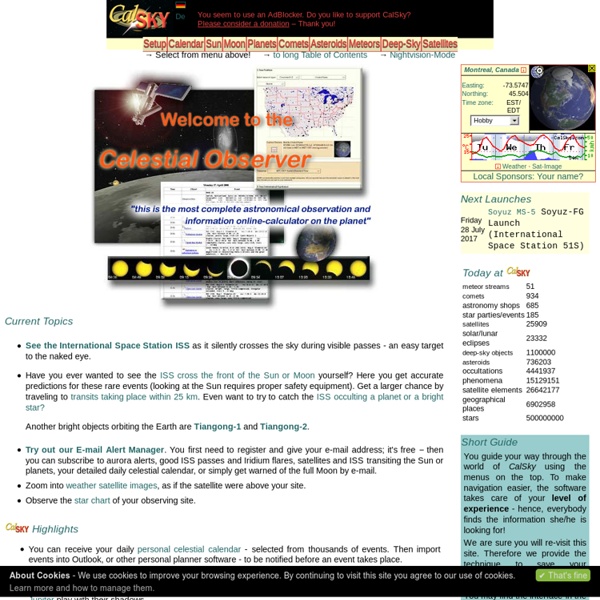



Modelo 3D interactivo del Sistema Solar: Planetas y el cielo de noche Page 2 Menu Général Utilisez la touche Ctrl + la molette de votre souris pour agrandir ou non l’affichage du site. ADASS XXII Conference Jump to: Registration Fees | Student Discount | Cancellation Policy | Demos | Submitting Abstracts | Presentation and Publication Policy Important Dates Abstract Deadline for Oral Talks and Focus Demos::17 August Financial Aid Deadline:17 August Early Registration Deadline (extended):28 September BOF and Tutorial Proposl Deadline (extended):28 September Demo Booth Deadline (extended):12 October Poster Deadline (to get in program):12 October Regular Registration Deadline:12 October Late Poster Deadline:2 November Registration and Abstract Submission are now open! Registration Fees Standard registration covers attendance at the meeting including the opening reception, and a copy of the meeting proceedings. Registration Early (before 21 September): Regular (before 12 October): Student (before 12 October): Walk-up (after 12 October): Focus Demo Fee: Demo Booth Fee Tutorial Fee: Banquet: Student Discount ADASS 2012 c/o Jean Soliday 1205 W. Note that students may also apply for financial aid. Cancellation Policy
Gravitational waves: breakthrough discovery after two centuries of expectation | Science Physicists have announced the discovery of gravitational waves, ripples in the fabric of spacetime that were first anticipated by Albert Einstein a century ago. “We have detected gravitational waves. We did it,” said David Reitze, executive director of the Laser Interferometer Gravitational-Wave Observatory (Ligo), at a press conference in Washington. The announcement is the climax of a century of speculation, 50 years of trial and error, and 25 years perfecting a set of instruments so sensitive they could identify a distortion in spacetime a thousandth the diameter of one atomic nucleus across a 4km strip of laserbeam and mirror. The phenomenon detected was the collision of two black holes. At the beginning of the signal, their calculations told them how stars perish: the two objects had begun by circling each other 30 times a second. The observation signals the opening of a new window on to the universe. Thursday’s announcement was the unequivocal first detection ever of gravity waves.
Hallo northern sky planetarium software program The home page of the Hallo Northern SKY planetarium program. Welcome to the web page of the semi professional free planetarium program HNSKY for MS-Windows and Linux. This program can control your telescope via the ASCOM or INDI interface, has a comprehensive up to date deep sky database with 30.000 objects and detailed descriptions. Free with 30.000 deep sky objects and native star databases up to magnitude 18. Download: Star databases:Extras:
Stellarium Stellarium theconversation Four stars in the night sky have been formally recognised by their Australian Aboriginal names. The names include three from the Wardaman people of the Northern Territory and one from the Boorong people of western Victoria. The Wardaman star names are Larawag, Wurren and Ginan in the Western constellations Scorpius, Phoenix and Crux (the Southern Cross). The Boorong star name is Unurgunite in Canis Majoris (the Great Dog). They are among 86 new star names drawn from Chinese, Coptic, Hindu, Mayan, Polynesian, South African and Aboriginal Australian cultures. These names represent a step forward by the International Astronomical Union (IAU) – the global network of the world’s roughly 12,000 professional astronomers – in recognising the importance of traditional language and Indigenous starlore. What’s that star called? Many cultures around the world have their own names for the stars scattered across the night sky. The IAU recognised that the lack of official star names was a problem.
Home Planet Release 2 Release 2 -- November 17th, 1994 Release 2 of Home Planet, a comprehensive astronomy / space / satellite-tracking package for Microsoft Windows 3.1 and above, is now available by anonymous FTP; see details at the end on how to FTP and install the software. Home Planet is in the public domain; you can do anything you like with it. Significant additions since the original release of Home Planet are flagged in the following feature list in bold. In addition, dozens of bugs were fixed and user suggestions implemented. Home Planet Release 3 for Windows 95 and NT 4.0 is now available. December 1995 upgrade: If you've already installed Home Planet, or once you complete the installation process described later in this document, you can upgrade your copy of Home Planet to include a much higher resolution topographical map (1440x720 pixels as opposed to 720x360) made available by the Marine Geology and Geophysics Division of the U.S. To obtain a copy of the Home Planet distribution:
'A new way to study our universe': what gravitational waves mean for future science | Science You wait 100 years for a gravitational wave and then four come along at once. Or so it must seem to those who spent decades designing and building the exquisite instruments needed to sense the minuscule ripples in spacetime that Albert Einstein foresaw in his 1905 theory of general relativity. The first gravitational wave bagged by physicists reached Earth on 14 September 2015 and sent a quiver through the US-based Laser Interferometer Gravitational-Wave Observatory (Ligo). The second hit three months later, on Boxing Day, followed by a third in January this year. When the fourth wave arrived in August, both Ligo and a second observatory in Italy, named Virgo, recorded the moment. Each of the gravitational waves had been set in motion by violent collisions between black holes more than a billion years ago. “This is a story in two parts,” said Sheila Rowan, director of the Institute for Gravitational Research at the University of Glasgow. Gravitational waves are not so easily blocked.